She also has a masters in Applied Linguistics. Amina’s work is grounded in community engagement as she is fascinated by human interactions and relationships. She seeks to explore and visually represent stories around the coping behaviors of African diaspora populations in the United States. Her work is strongly inspired by her relocation to the United States and She paints people from her local African immigrant communities. Amina works primarily with oils and acrylics which occasionally employs image transfers and collages which she uses a visual vocabulary to render her ideas and enhance her narrative.
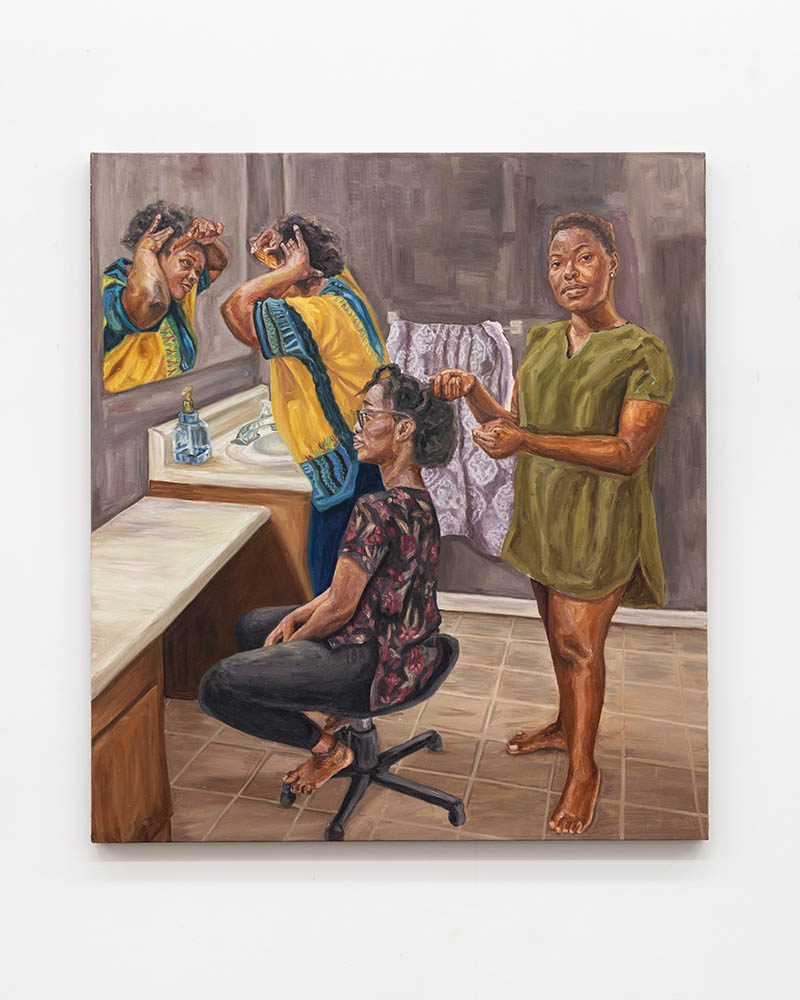
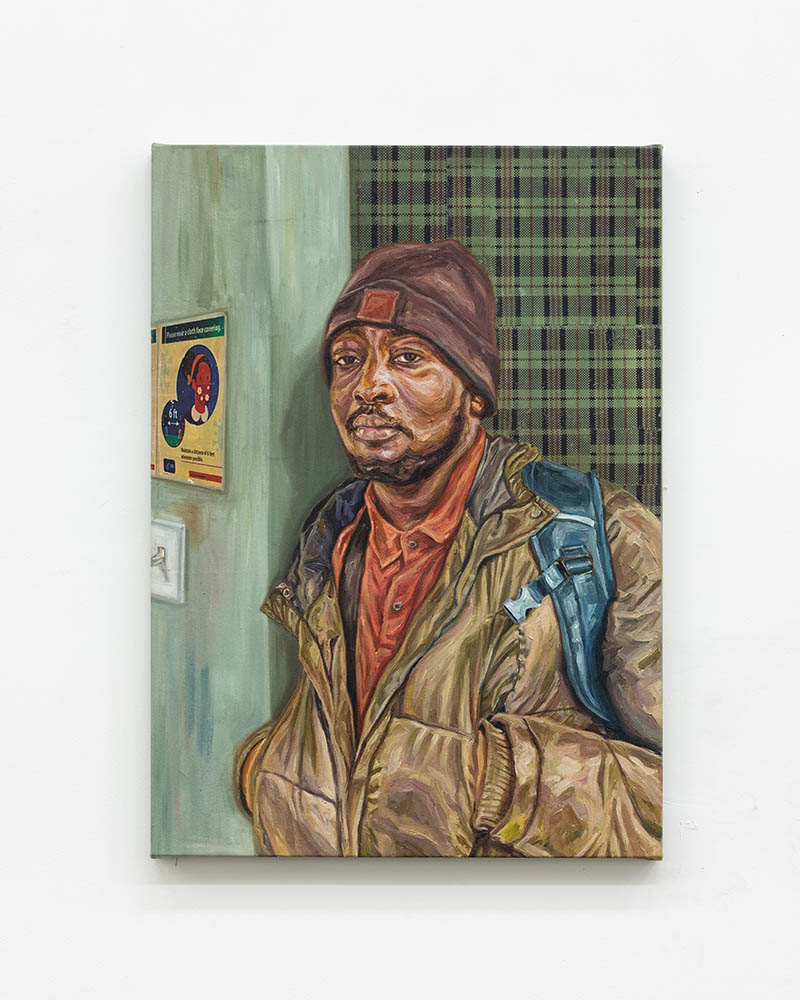
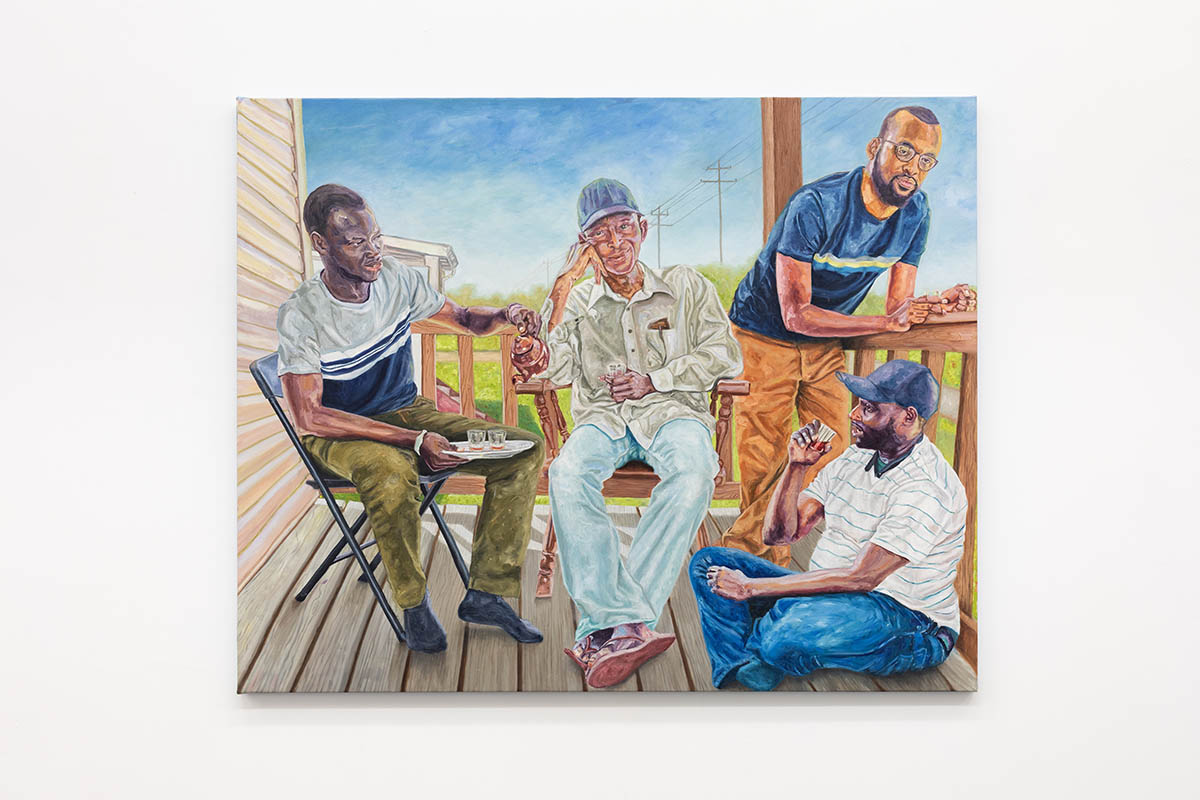
Can you tell us about your background and how you became a painter?
I was born and raised in the Eastern region of Ghana. Art has been part of my life as far as I can remember. It started with drawing Disney characters from books I had read. I started to enjoy it after an aunt of mine gifted me color pencils and watercolor, from then on I started exploring and experimenting with color. I knew then I wanted to be an artist. However, growing up my dad wanted me to become a lawyer or a journalist, so the idea of an artist as a profession was not very much encouraged even though I knew my talent was appreciated. I continued to pursue art as a hobby since it was my passion. It all changed when I came to the United States for my first master’s degree program in Applied Linguistics. I planned to finish my program, then do my Ph.D. and get into lecturing, which I had later come to develop a lot of interest in due to my experience as a Teaching assistant after my undergrad. I also served as the coordinator and instructor of the Swahili program at Ohio University, so at the time that was it for me. But right before completion, I just knew I was not ready for a Ph.D. program, the idea of a Ph.D. right after school felt like a trap. I wanted to pursue art. So I started looking into MFA programs around the country that would at least give me a shot because I did not have a BFA or any formal art training, and considering the requirements of many schools I did not remotely stand a chance. Through my research, I discovered my school (Ohio University) has a good MFA program. So I visited the school one day and met the director of the School of Art+Design.
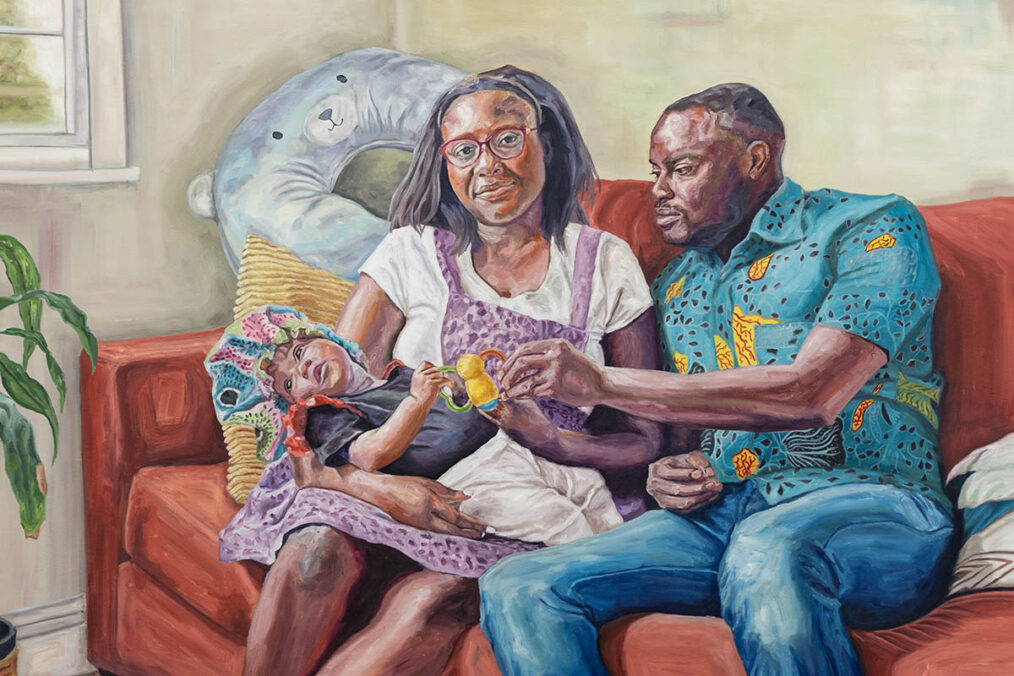
I expressed interest in the Painting + Drawing program. She was very happy to receive me. She started asking about my background and where I had my BFA. I was like “You see that’s the thing, I don’t have a BFA but I can paint” She started to explain to me how rigorous the program is, and how even candidates with formal art training still found it demanding. I immediately took out my phone and started showing her images of what I had done in the past which were documentation of some commission works I had done to raise some money to come to the States for school. She looked at them and then at me and said, “You seem very determined”. She later agreed to help me put in an application. I put all the required documents together including all my essays, and she helped proofread them. She also taught me how to edit my images so they were presentable enough to submit. That’s how I got into the MFA program. And to be honest, with MFA, as hard as it is already, for me it was another layer of a challenge because it almost felt like a fish out of water. I was among some incredible artists which was very intimidating. Also, the whole system of history classes, critique, and the routine of spending time in the studio were all new to me. It’s like I didn’t know what I was getting myself into. MFAs are usually more conceptually focused and all I wanted to do was learn to paint better, hence it was more learning for me. And with my MFA thesis, I found a new sense of purpose passion, and desire to share my experiences and tell stories of what it’s like to live as an African immigrant in the US.
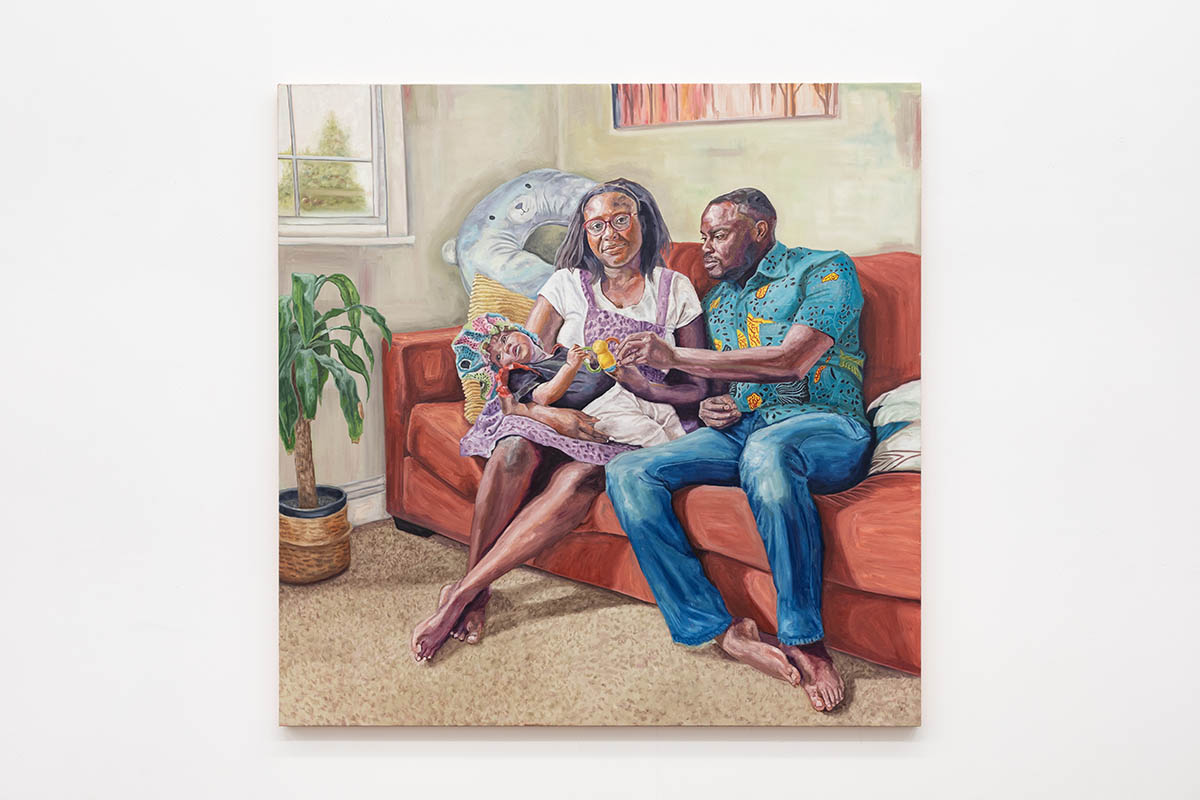
How would you describe your style and the themes you explore in your work?
My work is grounded in community engagement. Themes in my work are multi-layered and overlapping. I explore issues such as community, migration, immigration, cultural transfer, identity, and displacement. I do not approach these issues in isolation, especially when it comes to the group of people my work is about. My work follows the journey of African immigrant communities as they strive to make a home and create new support systems for themselves in foreign spaces. The struggle to take on new identities to fit in also comes with challenges resulting from separation from familiar cultures, therefore, my goal is to explore and visually represent stories around the coping behaviors of African diaspora populations in the United States. In my work, I am attempting to capture what a “sense of belonging” looks like within African immigrant communities, through their rituals, traditions, mundane practices, and interactions.
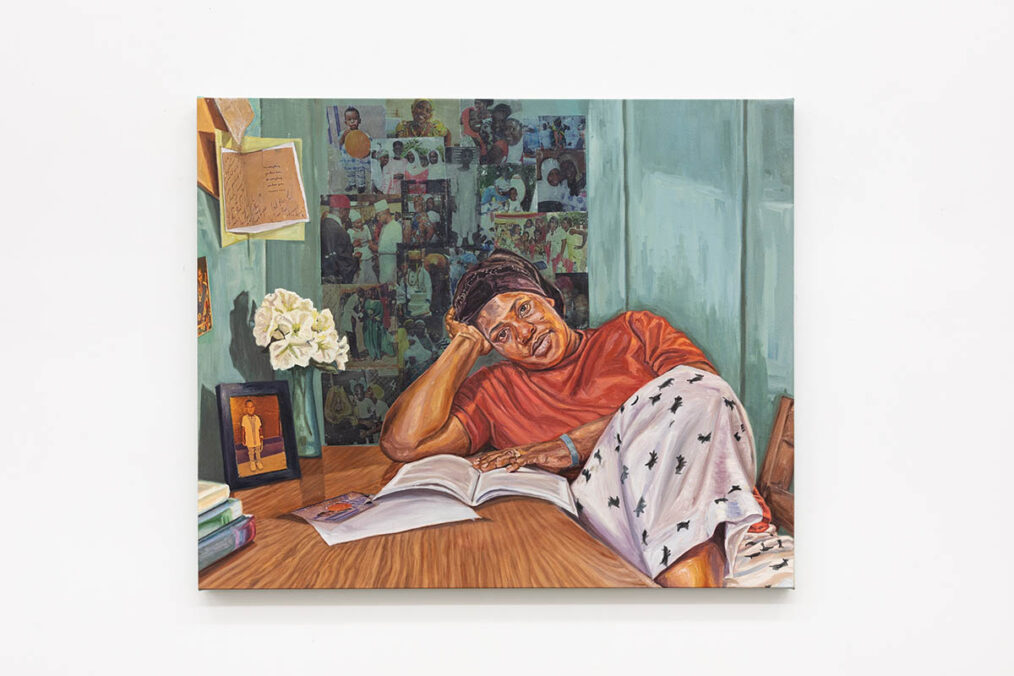
I am also interested in how imported traditions among these people are modified to accommodate limitations imposed by the new environment. Each scene in my paintings has its tale to tell of how members of these communities are reckoning with their new environment. As far as my painting style is concerned I paint in a very loose and somewhat realistic way. Apart from figure paintings, I did a lot of abstract pieces. I still do, perhaps not as much as before, but this practice somehow reflects in my painting. I am also big on texture, I don’t go all crazy with it but it’s very prevalent in my work. My works are usually large-scale. I love working at this scale because I feel they are very intimate and inviting, which I believe is a language I am subconsciously exploring.
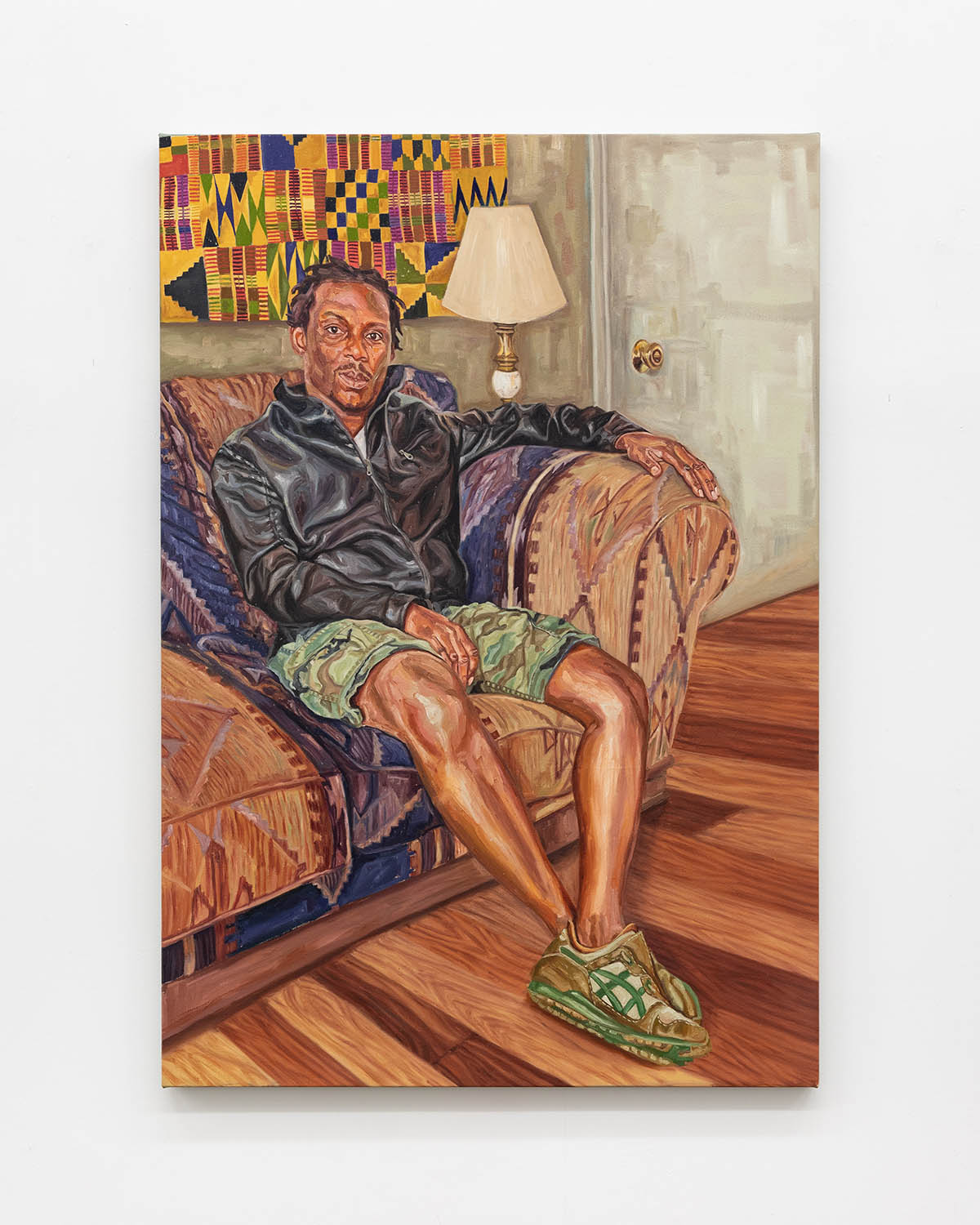
How do you keep yourself inspired and motivated in your work?
I believe my greatest motivation comes from meeting people like me. Hearing them share their stories and even my own experience as well. I am a people person so community is very important to me, especially as an African. To be able to experience that familiar space of home thousands of miles away from where I come from is very consoling. I find it remarkable that people would go beyond limits to ensure they create and retain that system of cultural familiarity so their children could equally have the experience of almost what it’s like to grow up in Africa and things like that inspire and fascinate me. As an immigrant, documenting these experiences helps me make sense of my reality as they reflect a portion of my identity.

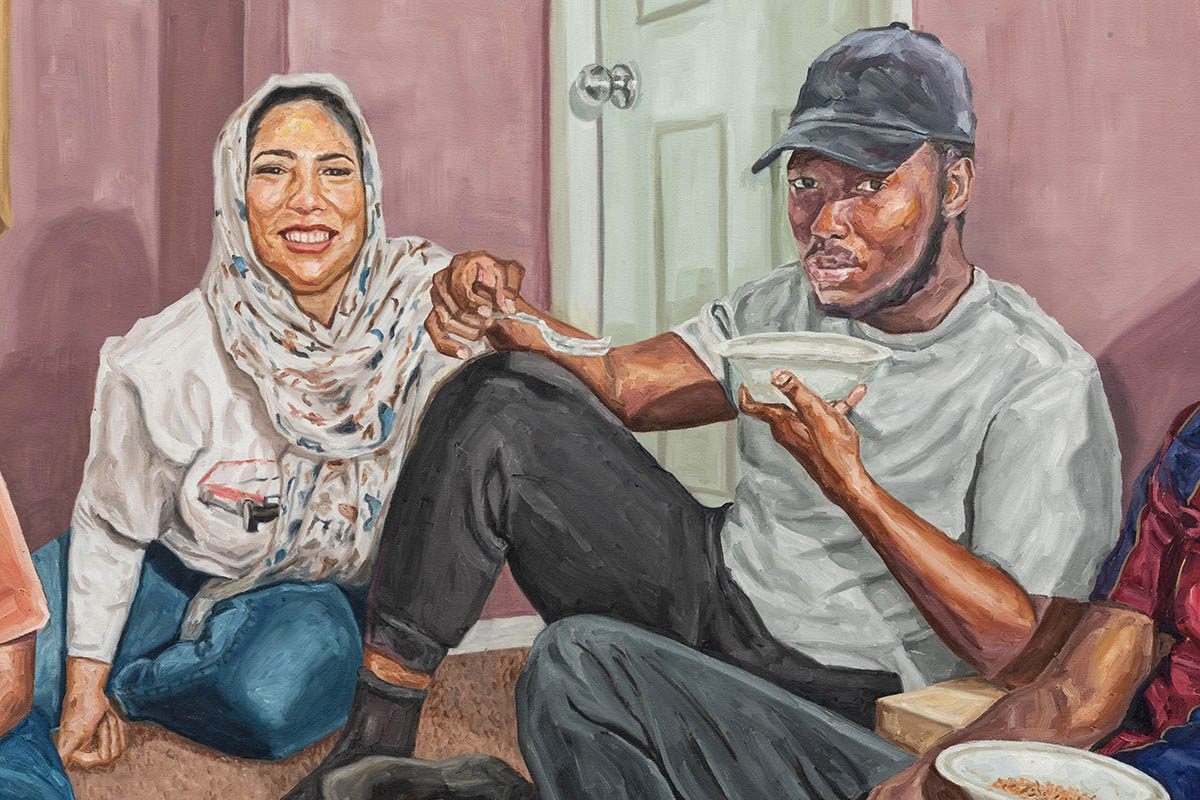
Can you tell us about the role of experimentation in your work?
As a self-taught artist experimentation is a big part of my practice. I am always looking for new visual vocabulary to better express my ideas. For instance, I recently started experimenting with image transfers in my work. It’s a new process that I have come to enjoy a lot because it adds another layer of relevance and interest to my work. I also play with collages in my work as well. So I am constantly thinking of something. I am not great at acting on my ideas immediately, but I take time to think through them and do a lot of research before I put them on paper. This may not be the best, but I think that’s just my process and I have come to terms with it.
What do you spend most of your time doing?
It’s simple, I spend a lot of my time in the studio, mostly painting because that’s what I love to do. If I’m not painting I’m probably doing some research on my laptop or something or hanging out with friends occasionally.
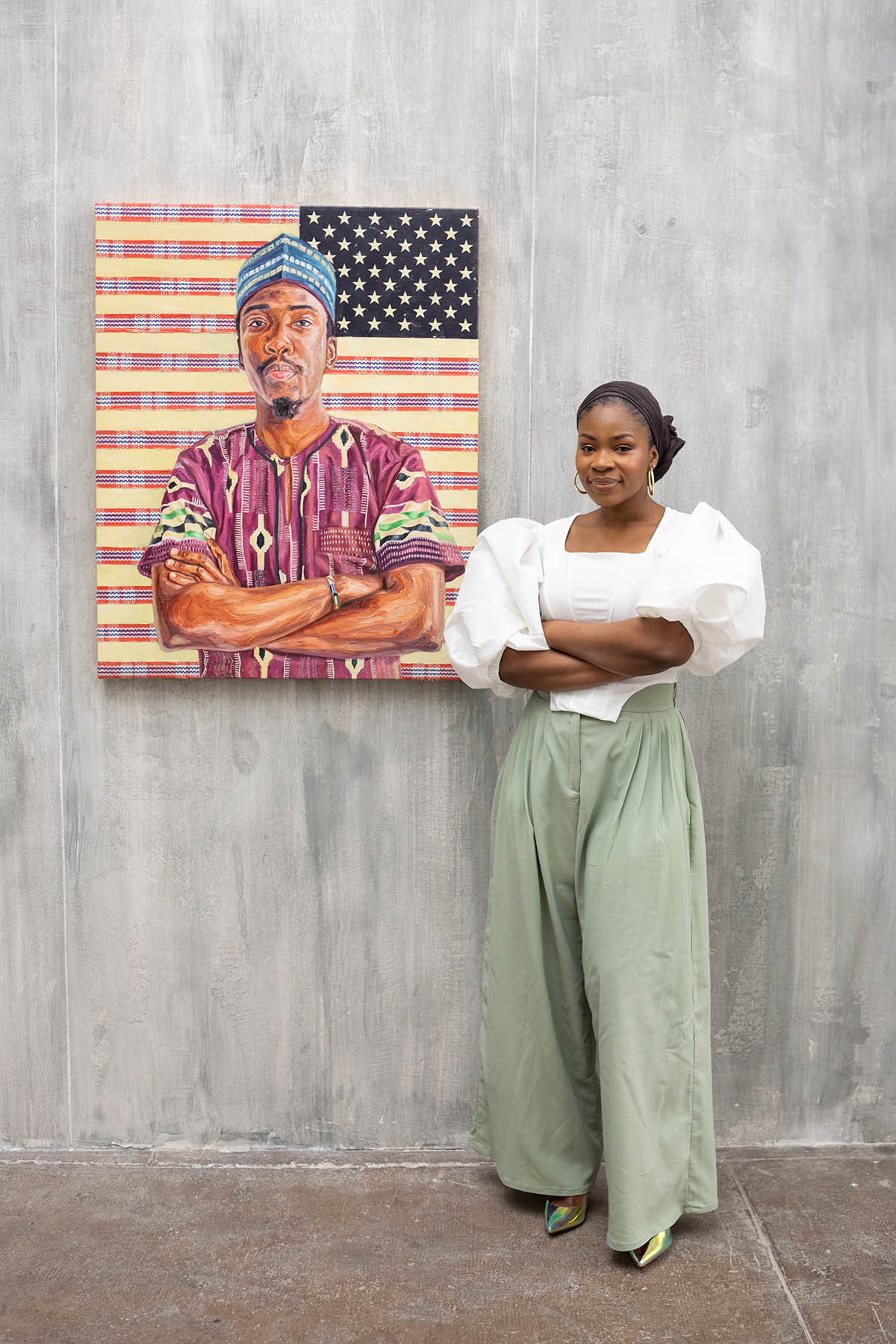
What are your plans for 2023?
This journey of documenting the African immigrant community’s experiences started in OU. OU accepts a lot of international students annually and a good chunk of these students are African students which explains the existence of a vibrant African student community. It was just a beautiful space to be part of. It was a community of students and faculty members as well as Africans that had been living there for a while, one that was built on mutual support and care, one that fostered cultural change and growth. So for my final thesis show in my MFA program, I decided to portray this because it played a huge role in my acculturation in the United States. I essentially wanted to show what it’s like to be part of that community. For now, I am investigating what this “sense of community“ in immigrant and African diaspora communities looks like outside of academic institutions. Even though these non-academic communities share a similar sense of value when it comes to supporting each other, the dynamics play out very differently in communities outside school environments. For instance, Columbus where I live now is a host of many rich African cultures and communities, including Ghana, Somalia, Sierra Leone, Kenya, Sudanese, etc. These diaspora immigrant groups I encounter seem to gravitate more towards their country people and less time mixing people outside their immediate community due to family and work obligations, but I intend to test this in practice and see how new cross-communities interactions operate. However, in a place like New York, where such communities are way bigger the dynamics play out on a larger scale with more interactions across communities within the larger community settings. All these differences and intricacies fascinate me, and I intend to investigate them further across states in the US. However, I am primarily interested in investigating how the existence of such communities contributes to providing a sense of home and belonging for its members both new and old.
Amina-Toure – www.instagram.com/amina_toure__




